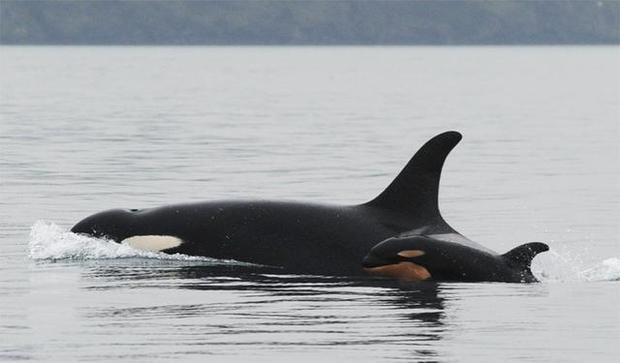forum
library
tutorial
contact

Orca Problem is
A Federal Problem
by Editorial Board
Capital Press, December 6, 2018
|
the film forum library tutorial contact |

|
Orca Problem is
by Editorial Board
|
 No one can question the wonder of a pod of orcas -- killer whales -- barreling through the ocean, their dorsal fins slicing through the water's surface. Time and again they surface, then submerge as they hunt for food.
No one can question the wonder of a pod of orcas -- killer whales -- barreling through the ocean, their dorsal fins slicing through the water's surface. Time and again they surface, then submerge as they hunt for food.
The thought that the population of orcas that migrates between Southeast Alaska and California might be in trouble was enough to worry the public, and Washington Gov. Jay Inslee. He convened a task force to study what was causing the so-called Southern Resident population to decrease.
The report of the task force is an extraordinary work aimed at getting to the possible cause, or causes, of the decrease. The first thing the report states is the decrease isn't what it first appears. Though the population's number has decreased from 98 orcas in 1995 to 82 in 2018, that population is actually up since 1973, when it was 66 orcas.
With that in mind, the orcas have had trouble reproducing the past 11 years, when two-thirds of the pregnancies have failed and no calves have survived in the past three years.
Where the report shines is in laying out the possible causes of the reduction in the Southern Resident population and even in explaining that orcas are vastly different from how they are portrayed to the public.
First the Southern Resident population is not a single group. Rather it consists of three pods that travel up and down the West Coast. They go as far north as the middle of the Southeast Alaska Panhandle -- where they must compete for food with the separate Northern Resident population.
While they eat fish, they also eat other critters, large and small.
The report lays out the main threats to the Southern Population. They include a lack of prey, noise from ships going through the region, fishing in Southeast Alaska, Canada and along the West Coast and toxic contaminants. It also mentions a variety of other minor factors.
A couple, such as the burgeoning population of California seal lions, stand out. According to the report, the population of California seal lions has jumped from 80,000 to 260,000 since the 1970s. Between 2010 and 2015, the sea lions ate 20 to 40 percent of the spring chinook run in the Columbia River at Bonneville Dam. The sea lions are protected under federal law, although a new law allows wildlife managers to control the number that are poaching salmon, which are also protected under federal law.
A reference to the Columbia and Snake River dams' effect on salmon seems to be an outlier compared to the many other problems facing orcas.
The report also mentions that hatchery-raised salmon might be an additional source of food for the orcas, serving as a more immediate means of feeding them.
Inslee and the state Legislature will review the report this winter. We are confident they will reach the same conclusion we did: management of the Southern Resident population of orcas is clearly a federal issue. Nothing that Washington does will have a significant impact on those sea mammals, which are protected under federal law.
As soon as they understand that, they can get the federal agencies responsible for the orcas to address the significant problems facing them.
learn more on topics covered in the film
see the video
read the script
learn the songs
discussion forum
